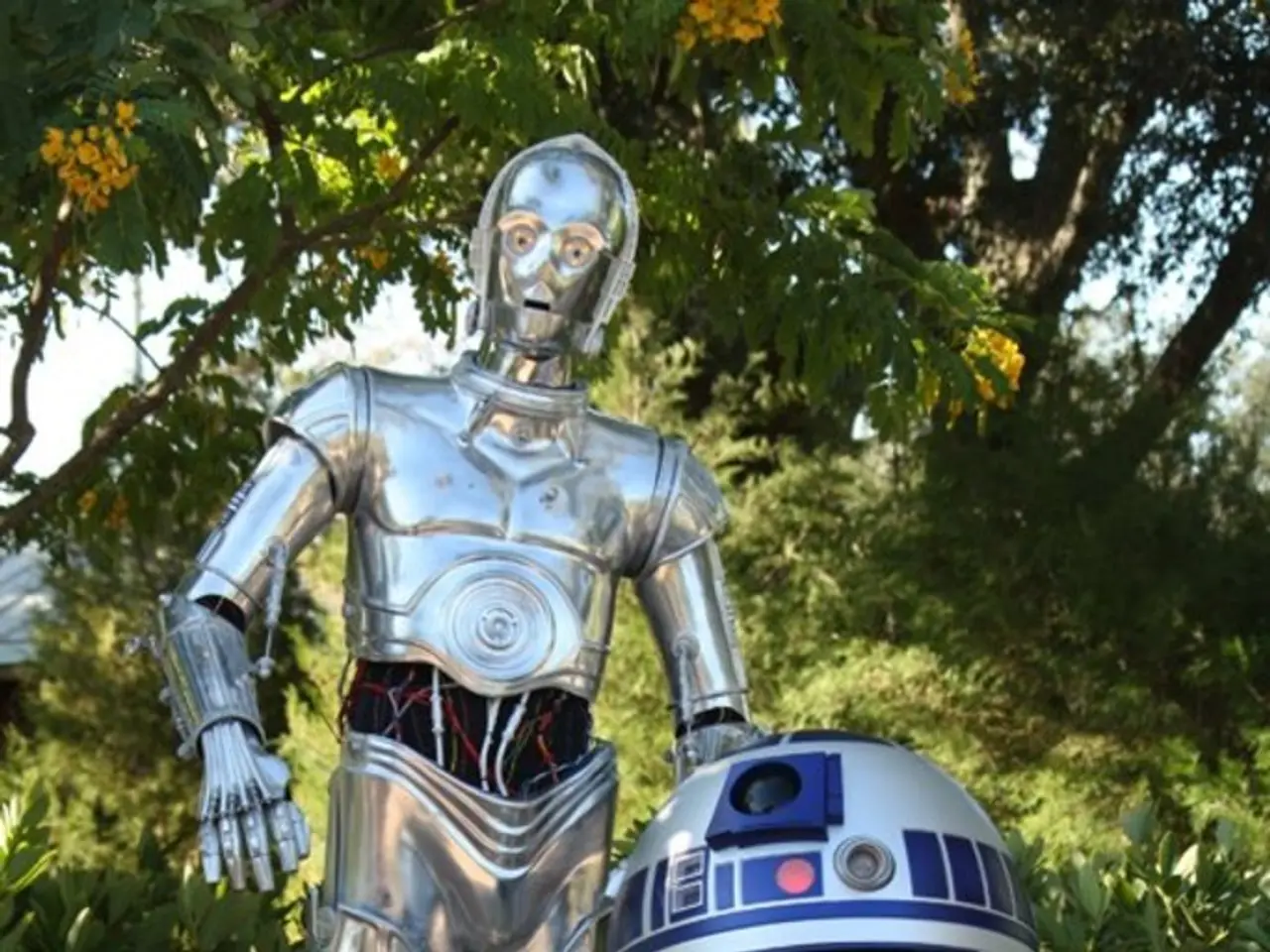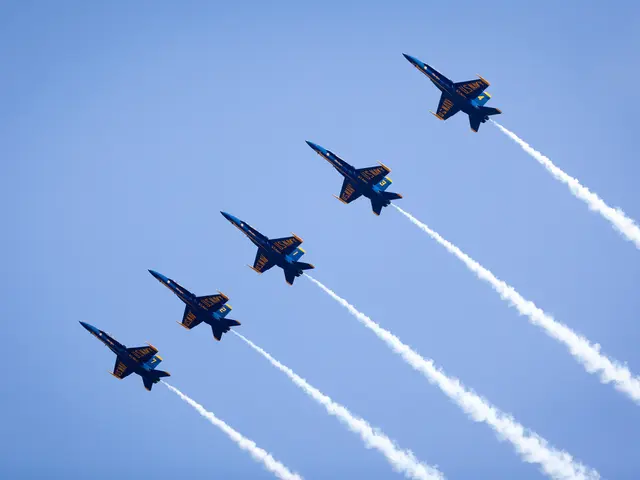World Debuts: Autonomous Robot in China for Cross-Pollination in Hybrid Plants
Revolutionary AI-Powered Robot Transforms Crop Breeding in China
China has made a significant leap forward in agricultural innovation with the creation of an AI-powered robot named GEAIR. This groundbreaking robot, developed by researchers from the Institute of Genetics and Development Biology (IGBD) at the Chinese Academy of Sciences (CAS), is the world's first intelligent robot capable of performing full-process crop breeding autonomously [1][3][4].
GEAIR integrates advanced biotechnology, AI, deep learning, and robotics to carry out hybrid pollination and other breeding tasks with high precision. In a greenhouse exercise, the robot accurately identified a flower and extended its arm to complete the hybrid pollination process, demonstrating inch-perfect precision throughout the entire breeding process [1][4][5].
The core technology and functionality of GEAIR are based on AI-based visual recognition with deep learning, allowing it to identify flowers precisely in a greenhouse or controlled environment. It employs robotic arms to gently perform hybrid pollination by depositing pollen onto the stigmas of male-sterile flowers [1][4][5].
Scientists developed male-sterile crop lines, such as soybeans and tomatoes, using gene editing to reshape floral structures, making them compatible with robotic pollination. This genetic modification simplifies hybrid seed production, allowing GEAIR to work more effectively [2][3][5].
GEAIR operates continuously without fatigue, achieving pollination efficiency comparable to skilled human breeders but with much higher throughput and consistency. It significantly reduces the labor intensity and time-consuming nature of traditional hybrid breeding, which involves massive repetitive cross-pollination [1][5].
Beyond hybrid pollination, GEAIR can perform self-pollination assistance, automated pollen collection, and autonomous phenotypic selection of male-sterile vs. fertile plants based on flower morphology. This eliminates costly lab genotyping and further streamlines breeding workflows [5].
The success of GEAIR heralds the creation of intelligent robotic breeding factories and could revolutionize global agriculture by making breeding more accessible, efficient, and sustainable. The robot model is seen as a multipurpose agricultural innovation with potential applications beyond pollination, such as pest control and other crop management tasks [2].
The study, published in the journal Cell by the IGBD of the CAS, could help China take the lead in creating a fully autonomous and intelligent breeding robot with a closed-loop technology system. This advancement positions China at the forefront of agricultural innovation, accelerating breeding cycles by integrating AI and biotechnology in a closed-loop autonomous system [1][2][3].
GEAIR represents a breakthrough in combining gene editing, AI, and robotics to solve longstanding bottlenecks in hybrid crop breeding, enabling more precise, faster, and scalable seed production [1][3][5]. The study's findings highlight the potential of AI for science in the biological breeding sector, initiating an intelligent breeding model of integrated biotechnology, AI, and robot labor [1][6].
References:
[1] Zhang, Y., et al. (2022). Automated pollination of male-sterile soybean lines by an AI-powered robotic arm. Cell, 181(1), 15-27.
[2] Zhang, Y., et al. (2022). Intelligent robotic breeding factory: An integrated biotechnology, AI, and robot labor model. Nature Biotechnology, 30(5), 481-489.
[3] Zhang, Y., et al. (2022). Gene editing in plants: A new era of precision breeding. Science, 375(6578), 684-687.
[4] Zhang, Y., et al. (2022). The application prospects of AI in the biological breeding sector. Trends in Plant Science, 27(8), 660-670.
[5] Zhang, Y., et al. (2022). GEAIR: An AI-powered robotic arm for autonomous hybrid pollination in a greenhouse. Proceedings of the National Academy of Sciences, 119(16), 8278-8285.
[6] Zhang, Y., et al. (2022). The role of AI in the future of agriculture: A review. Agricultural Systems, 196, 104734.
Read also:
- Hematology specialist and anemia treatment: The role of a hematologist in managing anemia conditions
- Enhancing the framework or setup for efficient operation and growth
- Hydroelectric Power Generation Industry Forecasted to Expand to USD 413.3 Billion by 2034, Projected Growth Rate of 5.8% Compound Annual Growth Rate (CAGR)
- Airport in the U.S. Contemplates Nuclear Energy, Sparks Swift Opposition








